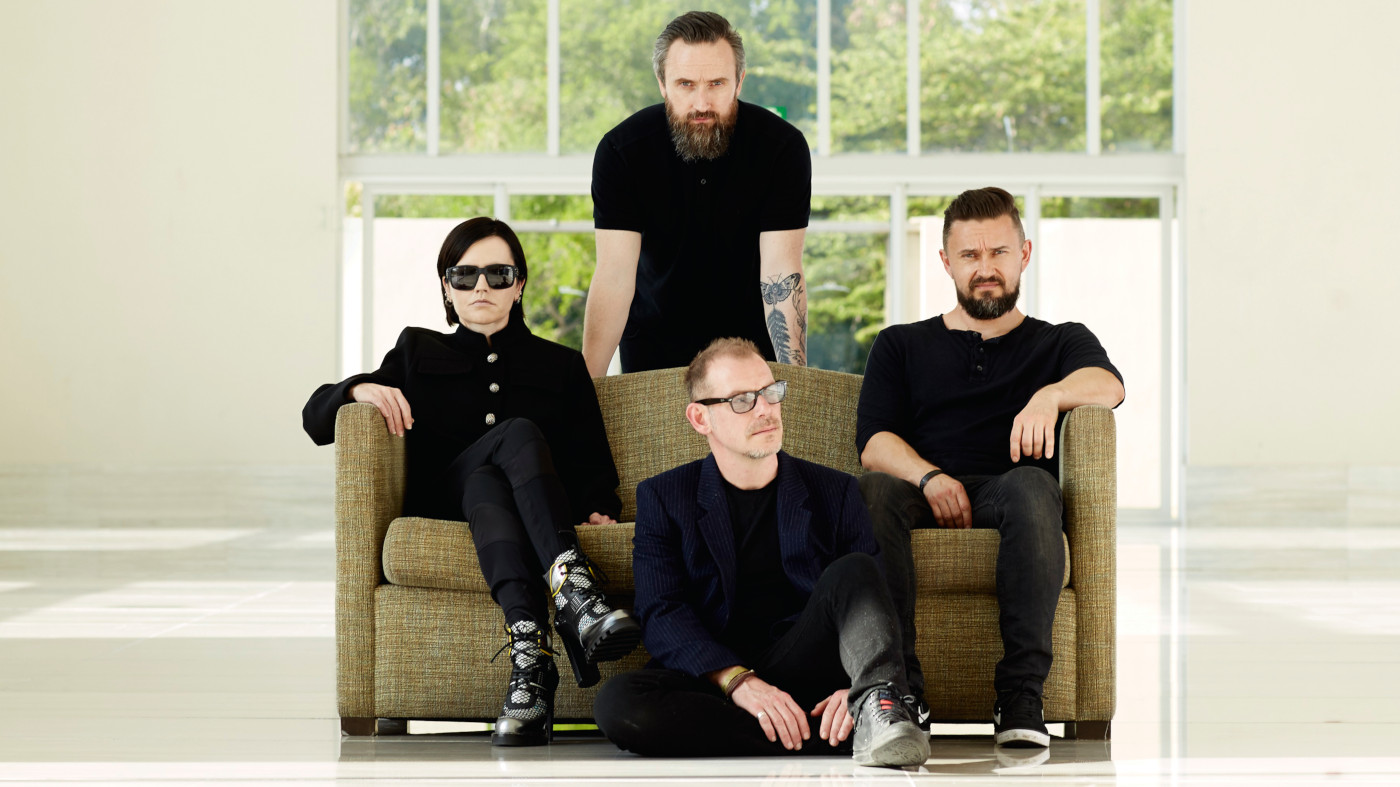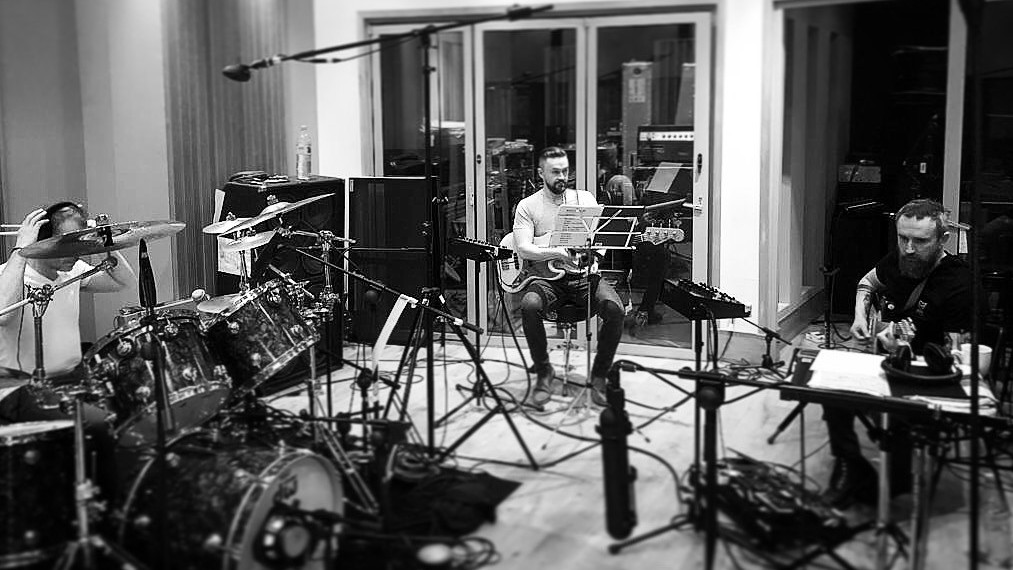The Cranberries’ Noel Hogan: “Doing the album when we did, it was almost like therapy for us”
The guitarist reflects on Dolores O'Riordan’s passing and the band’s unlikely breakthrough

Hit with the passing of their iconic vocalist Dolores O’Riordan, Ireland’s indie icons the Cranberries have wrung a remarkable final record from their grief.
The final lyric on The Cranberries’ last record, In The End - ‘It’s strange when everything that you dreamt of was nothing that you dreamt of/in the end...’ - is the last line The Cranberries will ever record - of that much guitarist and songwriter Noel Hogan is certain.
It sums up, in the typically pointed, yet dream-like hand of vocalist/co-writer Dolores O’Riordan, the poisoned chalice of success in a rock band, of her life and, ultimately, her tragic and untimely passing in January 2018.
I know it was shock but I just kept thinking that first day, ‘It’s a mistake. There’s been a mix-up’
While death always seems unjust, in the case of O’Riordan, it feels particularly cruel. The singer faced ongoing physical and mental health issues, but was reportedly doing well in her personal and professional life in the period before her passing on Monday 15 January, 2018.
“I had spoken to her on the Friday a lot. Nearly all day long, on and off, so it was actually a really, really good day,” recalls The Cranberries guitarist and co-writer Noel Hogan.
“Then Sunday morning I get an email from her with a song. She was at the airport flying to London, and I thought, ‘Cool, I’ll listen to that tomorrow.’ The next thing I know, it’s the Monday morning and I get a phone call from her brother telling me what had happened.”
O’Riordan had been found in the bathtub of her room in London’s Park Lane Hilton hotel. The inquest ruled the cause of death as accidental drowning following intoxication. Aged just 46, she left behind three children, her partner Olé Koretsky and the rest of The Cranberries - her friends and confidantes of 30 years.
Want all the hottest music and gear news, reviews, deals, features and more, direct to your inbox? Sign up here.
“It just didn’t feel right,” Noel says, pausing periodically. “I know it was shock but I just kept thinking that first day, ‘It’s a mistake. There’s been a mix-up.’ I felt like that for a good few weeks afterwards, especially around the funeral... I found that very difficult and I couldn’t come to terms with that at all. I guess it made it final. Sitting there, looking at her in the coffin... that was one of the hardest things I think I’ve ever done.”

Dolores’ demos
It was at the funeral that O’Riordan’s brother first asked Hogan about his plans for the material that had been demoed for the Cranberries’ next record. “I was like, ‘It’s there, but I haven’t had the guts to look at it yet’,” recalls Noel. “He said, ‘She really wanted to do this album. You should listen through...’”
Hogan eventually built up the courage to compile the demos that, as per their habit, he and O’Riordan had recorded remotely and traded between themselves.
“That’s when I kind of realised what we had and what I felt was a very strong album,” he says. “Dolores was such a strong vocalist that her demos were always really good.”
Some of the demos were very, very hard to listen to. You, obviously, then, start listening to everything with different ears, lyrically
The band had used vocal demos in final mixes on past records, so the precedent was already there. Bassist Mike Hogan (Noel’s brother) and drummer Fergal Lawler were duly consulted and agreed, as was Dolores’ family and the band’s longtime producer Stephen Street.
“It was Stephen who said, ‘Look, I think we should do this now’,” says Noel. “He said, ‘The momentum is there. You’re very emotional about this and it might be the best time.’ So I think it was April when we went into the studio... and it was really weird those few weeks. I kept thinking, ‘She’s going to call any day now.’
“In hindsight, I guess doing the album when we did, it was almost like therapy for us. We realised that, ‘This is how it’s going to be...’ So I think it was right to do it when we did. If we were going in a year or two later, I don’t think it would feel the same and we might not even do the album.”
Of course, alongside losing the one person he had written songs with for 30 years, repeatedly listening to the voice of a loved one so soon after their death must have presented a significant challenge.
“It was really hard,” Hogan acknowledges. “It was a case of having to walk out of the room and come back in again a few times. You think, ‘I’ll be fine.’ Then you get the drum tracks up and the bass and you’re going through it individually and then you bring in the voice... It was so fresh and raw. Some of them were very, very hard to listen to. You, obviously, then, start listening to everything with different ears, lyrically.”
Indeed, listening to the resulting album, In The End, it is nigh-on impossible to avoid applying new posthumous meaning to O’Riordan’s lyrics. All Over Now is ostensibly the story of a tumultuous and abusive relationship, but the repeated refrains of “do you remember?” and “it’s all over now” almost wilfully veer into new context.
A small mercy of its tragic conception is that the forced decision to rely on demo recordings ultimately benefits the album, roughing up a sound that has grown slicker over the intervening decades, recalling the band’s early years as painfully shy indie outsiders in the process.
The artwork - a mocked-up group of four ‘kid Cranberries’ holding cardboard instruments and mics - further reinforces that link to their origins in late-80s Limerick. Back then, it was a school friend passing Noel a Cure compilation that first sparked his obsession with guitar music. He had been playing for less than a year when the band started in 1989 and a cardboard guitar doesn’t seem too far from the truth.
“My parents bought me this big sunburst guitar that didn’t even have a name on it,” recalls Noel of his first years as a guitarist.
“When we did our first demo, I used it and it sounded more like a banjo, to be honest! I learned on that thing and I did have it for a few years before I could afford the first proper guitar that I still use today, which was a Telecaster. When we got signed, the minute we got a bit of money, I went up to London and bought a 1973 Telecaster. I still have that to this day and I use it all the time.”

On the outside
The band were discovered relatively quickly - an early demo caught the ear of a few labels and they signed to Island in 1991 - so that unbranded guitar didn’t last long, yet it never felt like entirely plain sailing for The Cranberries. Perhaps due to an existence entirely outside of the London music and media bubble, the four-piece seemed dogged by an almost group-wide inferiority complex.
We were very aware - myself and the two boys, especially - that we hadn’t been playing that long
“We were not the most obvious rockstars,” admits Noel, chuckling. “We were very quiet. You had to drag conversation from us. We were not confident. We were very aware - myself and the two boys, especially - that we hadn’t been playing that long. You felt like an imposter at times. We had all this fame or whatever and the band were huge but I’d only been playing two or three years. You don’t have the confidence to go, ‘Aren’t I brilliant?’
“Dolores had been playing since she was a kid and, musically, she was miles ahead of the three of us at that time. We had a lot of catching up to do, but even then Dolores was very shy in her personality at that time. She sang with her back to the audience.
“But it’s like anything, you do enough of it and you start to get used to it. I hated it at the beginning, the live side of it. I’d be fine until about 6 o’clock in the evening and then you’d feel that sick feeling coming on you again - and all you ever think about is what’s going to go wrong at the gig.
“You never think: ‘I can go on and nothing’s going to happen - it’s just going to be a gig.’ But as time goes on you get used to it. [It wasn’t until] the second album we felt, ‘Actually, people like what we’re doing, so maybe don’t be so self-conscious about the whole thing’.”
It was ultimately to be success in the US that provided that vindication, with four introvert kids from Limerick succeeding where umpteen mouthy Brit-poppers so feted by the UK music press of the time had failed.
American dream
“The first album came out and it died a death on this side of the world,” says Noel. “We were in Europe at the time when we got the call about America - that we just needed to drop everything and come over, that Linger was doing really well on college radio. So we arrived in Denver, Colorado for the first gig [14 June 1993]. We were opening up for The The and I’ll never forget it. Four days earlier we were the opening act on a tour where we were playing to five people each night and no one knew any of the songs. And we didn’t think we’d have a long career doing this because of that.
We went out that first night [in America] and the place just went crazy. We couldn’t believe it
“But we went out that first night [in America] and the place just went crazy. We couldn’t believe it. We started with Linger and they knew all the lyrics. It was night and day to what we were used to. It’s hard to explain how much of a change it was. Only a couple of years earlier I was in my bedroom trying to figure out the chords to the most basic of songs.”
An astonishing 40 million in album sales and five top 20 albums on the Billboard chart followed in the intervening decades. In The End, however, is their best record since 1994’s No Need To Argue - a fitting tribute to those career highs.
It’s a tough call as to whether the return to form makes O’Riordan’s passing harder to take, or if the record’s qualities are the result of her bandmates paying her the best compliment they can in their performances. Regardless, the decision to persevere seems utterly justified.
A final tribute...
“In The End, the title track and the last one on the album - that kind of sums up everything,” reflects Noel. “The band, everything we hoped it would be and how when we got it, it’s not what you expect... It was the last song we recorded together. You’re sitting there listening to that lyric and I’m looking at the other two going: this is the end of it here, for the three of us, sitting and recording together as The Cranberries, this is the last time we’ll do it - these few takes.”
A career in gear

Noel on the favourites behind The Cranberries’ iconic sound
Vox AC30 & Fender Twin
“It’s been mostly the same since the beginning: a Vox AC30 with a Fender Twin. Though for some of the heavier stuff, like Zombie, I’ve used a Marshall JCM800. Otherwise we tend to drive the Vox for heavy sounds. We keep the Fender clean for the jingly stuff.”
Telecasters
“I have two main Telecasters. I have the original 1973 one that I bought in the early 90s, which is your bog standard Telecaster and then I’ve got a Thinline Telecaster with humbuckers in it that I use for the heavier stuff.”
DOD FX68 Chorus
“I don’t use a lot of pedals, but I have this old DOD chorus. It’s cheap as anything, but it became very much a part of The Cranberries sound and it’s on every album we’ve ever done.”
Dolores’ Gibson SG
“I used Dolores’ white SG a fair bit on this album. Particularly, on the songs that Dolores wrote, I felt that if she was there she would have done this as a rhythm, so it was nice. I’d never played it before because, you know, you can’t be picking up other people’s guitars!”
Matt is a freelance journalist who has spent the last decade interviewing musicians for the likes of Total Guitar, Guitarist, Guitar World, MusicRadar, NME.com, DJ Mag and Electronic Sound. In 2020, he launched CreativeMoney.co.uk, which aims to share the ideas that make creative lifestyles more sustainable. He plays guitar, but should not be allowed near your delay pedals.


